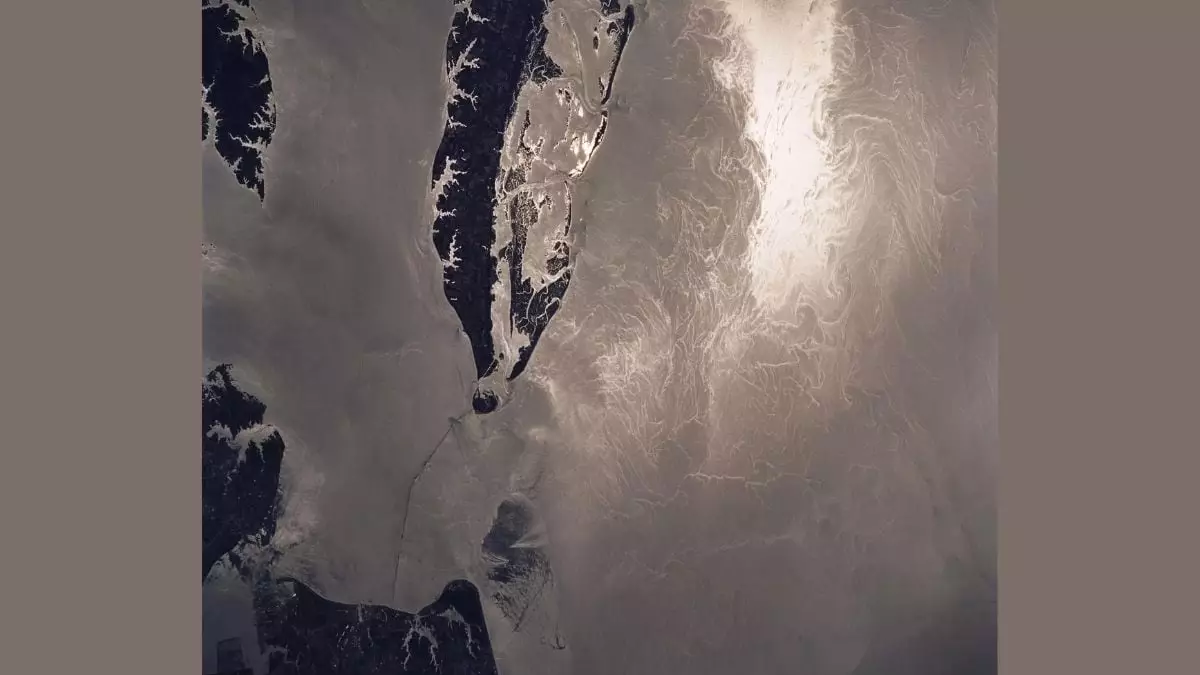In a world increasingly facing the repercussions of climate change, the insignificant nuances of our oceans are proving to be anything but trivial. For decades, these small-scale ocean features have been brushed aside, undervalued in discussions about climate and environmental stability. However, recent collaboration between NASA and the French space agency CNES has given rise to the Surface Water and Ocean Topography (SWOT) satellite, which is now shining a bright light on these once-overlooked currents and eddies. This satellite is not merely a piece of technology; it is a harbinger of monumental scientific progress that could reshape the climate narrative.
A Glimpse into the Unseen Forces
The SWOT satellite’s unprecedented ability to capture two-dimensional images of submesoscale features—currents and eddies that stretch about a mile across—represents a watershed moment in oceanography. The mission delivers high-resolution data that enable researchers to paint an intricate picture of how small-scale vertical currents serve as crucial conduits for carbon, nutrients, and heat across the globe’s vast waters. Oceanographer Matthew Archer succinctly captures the essence of this discovery by stating, “Vertical currents can bring heat from deep layers to the surface, warming the atmosphere.” By venturing beyond traditional observational limits, SWOT is illuminating channels of exchange in our oceans that significantly impact atmospheric climates.
Deciphering the Complex Interactions
What makes this revelation even more exhilarating is the way SWOT reveals the intricate tapestry of interactions between ocean depths and the atmosphere. For example, tracking a submesoscale eddy in the Pacific’s Kuroshio Current unveiled vertical circulations reaching remarkable speeds of up to 14 meters per day. These currents are not just scientific curiosities; they play a pivotal role in nourishing marine ecosystems at the surface that many species depend on for survival. Furthermore, the satellite’s observation of an internal solitary wave in the Andaman Sea showcases its capability to assess energetic movements more accurately than conventional methods ever could.
The Paradigm Shift in Ocean Modeling
Scientists argue that the introduction of SWOT data demands a seismic shift in how we model our oceans. Gone are the days when broad strokes were sufficient, as researchers like JPL’s Lee Fu emphasize the need for models tailored to include these dynamic small-scale features. This adaptation is not just an academic exercise; it’s a necessary recalibration in the face of mounting environmental challenges. Without incorporating these intertwining forces, our efforts to understand climate change and the oceans may be woefully incomplete.
A Collaborative Effort Towards Clarity
The SWOT mission is an exemplary model of international scientific collaboration, involving not only NASA and CNES but also contributions from the Canadian Space Agency (CSA) and the UK Space Agency. This union exemplifies how science transcends geographic and political boundaries, as a global community strives to protect the planet. The mission’s striking ability to provide consistent snapshots of Earth every 21 days signifies a new era in environmental observation, one that combines advanced technology with a dire necessity for climate action.
In synthesizing these insights, it becomes abundantly clear that small-scale ocean dynamics are powerful players in the larger game of climate and ecosystems. As we begin to appreciate the complexity and significance of these features, it is imperative to integrate this burgeoning understanding into our climate policies. The well-being of our planet hangs in the balance, and the time for action is undoubtedly now.


Leave a Reply